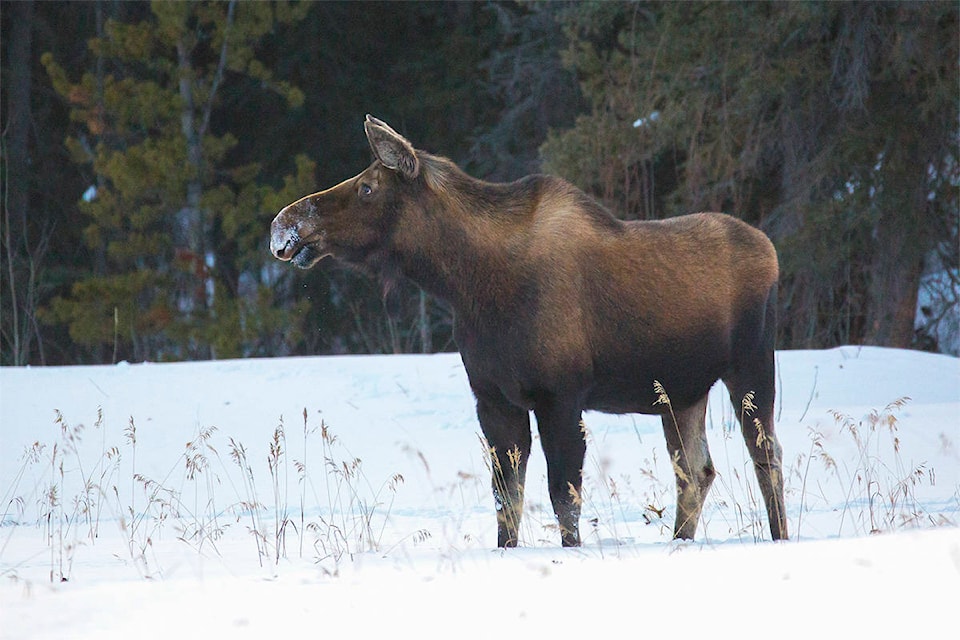Moose, on a geological timescale, are a new species to North America, a recently-published study has found, only crossing over from Asia to Alaska and the Yukon via the Bering land bridge about 15,000 years ago.
The study, “Population dynamics and range shifts of moose (Alces alces) during the Late Quaternary,” was published in the Journal of Biogeography on July 26. It saw researchers carbon-date and collect DNA from ancient moose fossils, as well as modern moose, from around the world to help pinpoint where the species originated and how it spread.
Analyses showed that modern moose have a common ancestor that likely sprung up in east Asia about 85,000 years ago, and although now associated with the North, they actually lived further south — as far as central Japan, the Balkans and Italy — during the peak of the ice age.
However, as the climate started to warm and forests began to replace tundra, moose started making their way into northern regions, following the spread of the vegetation they fed (and still feed) on.
And, about 15,000 years ago, a population of moose from what’s now eastern Siberia crossed Beringia, introducing the species to North America.
“Moose are such an iconic animal of the Yukon … There’s this idea that moose have always been here but really, they have a short (history),” Yukon government paleontologist Grant Zazula, one of the co-authors of the paper, said in an interview July 27.
“We use the words ‘invasive species’ all the time and moose were an invasive species here 15,000 years ago — they entered into an environment which they hadn’t been previously and they adapted very well, because we have lots of moose now in the Yukon.”
The Yukon contributed 22 of the 115 ancient moose specimens sampled for the study, collected from the Klondike gold fields and Old Crow area. In total, the work was about a decade in the making.
The study’s lead author, Meirav Meiri, was not available for an interview before press time. However, Meiri’s PhD supervisor and co-author Adrian Lister, a palaeobiologist and research leader at London’s Natural History Museum, told the News the study provides an interesting example of how species adapt when the climate changes.
This case is particularly compelling, he said, because while the study looked at fossils, they’re “very recent” ones from a species that’s still around.
“Colleagues of mine might be studying how, let’s say, dinosaurs responded to climate change a hundred million years ago — that’s interesting, but if you look at species like the moose, we are looking at its past history and how it responds, and it’s valuable because it’s the same species that’s with us today,” Lister explained.
“If we’re concerned about how present and future climate change might affect that particular species, and these actual concerns because it’s with us now, we can look back at the ice age record and get some clues to that.”
Besides mapping out moose movements, the study also offers some insight into the genetic makeup of moose today. The DNA samples indicate that the moose currently inhabiting eastern Siberia are not part of the same population that crossed the land bridge to North America thousands of years ago.
“What it suggests is, the similar appearance that we have today between those two areas is not because they’re genetically similar, but because they’re living maybe in a similar environment,” Lister explained.
As well, moose in North America have little genetic diversity, suggesting that they all descended from the single ancient group that crossed over the land bridge and was then cut off from other populations after sea levels rose.
While moose in North America are largely doing fine, Zazula said having little genetic diversity places any species at “exceptional risk” for extinction should there be any sort of rapid change to their habitats.
“That’s often one of the major factors in any extinction, is that a population is driven to such low numbers that it doesn’t have enough genetic diversity to kind of carry on,” he said.
While Lister said he doesn’t have any plans at the moment to do further research on moose fossils, Zazula said he thought there’s lots of potential for local work to happen.
“To me, I think (the study) leads to new questions about moose in the Yukon,” Zazula said, explaining that while the paper documented changes to the moose population during and towards the end of the ice age, there appear to have been more recent, dramatic changes as well.
Written accounts from explorers who came to the Yukon in the 1800s, he explained, describe plentiful caribou in the territory’s interior, while moose were described as being up in the mountains near the border with the Northwest Territories. Today, the opposite is true, with fewer caribou in the interior but more abundant moose populations.
“That’s the lesson of the fossils of the ice age of moose, is that when climate warmed in the past, moose populations expand,” Zazula said. “They take advantage of warm climates and I see no reason to doubt that’s happening now or will happen in the future with moose in the Yukon as well.”
Contact Jackie Hong at jackie.hong@yukon-news.com
